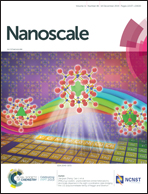Multifunctional molecular charge-transfer thin films†
Abstract
We report the controlled interfacial interaction in crystallized organic charge transfer thin films, consisting of bis(ethylenedithio)tetrathiafulvalene and C60. The induced broad-band absorption from the UV to near-infrared region leads to a wavelength dependent ambipolar (negative/positive) photoresponse, while multi-stimuli responsive behavior is achieved through charge-transfer interactions. In addition, by coupling with the tetrathiafulvalene-(7,7,8,8-tetracyanoquinodimethane) charge transfer complex, a significantly increased conductivity is achieved. The controlled interfacial charge transfer interaction provides an efficient approach to obtain multifunctional molecular crystallized thin films with a superior external stimuli response.



 Please wait while we load your content...
Please wait while we load your content...